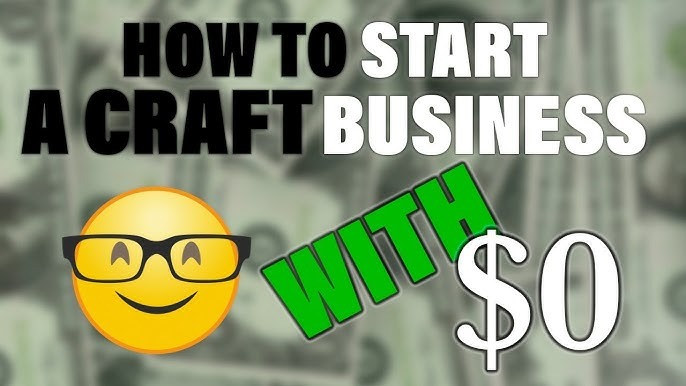
How To Start A Craft Business
Starting a craft business in 2025 is an exciting opportunity. With more people appreciating handmade and personalized goods, the craft industry continues to thrive. Whether you’re a seasoned artisan or someone passionate about creating, this guide will walk you through starting your own craft business step by step.
Step 1: Identify Your Niche
What is a craft business niche?
Your niche is the specific area or type of product you specialize in, such as jewelry, home décor, or handmade candles.
How to choose the right niche for you
Think about your skills, interests, and what makes your work unique. Research what’s popular yet underrepresented in the market.
Step 2: Research Your Market
Understanding customer needs
Identify who your ideal customers are. What do they value in handmade goods?
Analyzing competitors
Study similar businesses to understand pricing, styles, and marketing strategies. Learn from their strengths and weaknesses.
Step 3: Create a Business Plan
Importance of a business plan
A clear plan outlines your goals, strategies, and financial projections. It’s your roadmap to success.
What to include in your craft business plan
- Mission statement
- Target market analysis
- Product details
- Marketing strategies
- Financial forecast
Step 4: Budgeting and Funding
Estimating startup costs
Consider costs for materials, tools, packaging, and marketing.
Exploring funding options
Look into personal savings, small business loans, or crowdfunding platforms.
Step 5: Set Up Your Workspace
Finding the right space for crafting
Choose a space that is well-lit, organized, and inspires creativity.
Essential tools and equipment
Invest in quality tools that suit your craft, and create an ergonomic setup to boost productivity.
Step 6: Register Your Business
Choosing a business name
Pick a memorable, creative name that reflects your brand.
Legal requirements and permits
Register your business with local authorities and obtain any necessary licenses or permits.
Step 7: Build Your Brand
Designing a logo and brand identity
Create a cohesive look that represents your style and resonates with your audience.
Creating a memorable customer experience
Focus on excellent customer service, packaging, and personalization.
Step 8: Develop an Online Presence
Setting up a website
Use platforms like Shopify or Etsy to showcase your products. Include high-quality photos and detailed descriptions.
Using social media to grow your audience
Engage with your audience through Instagram, Pinterest, and TikTok. Share your creative process to build connections.
Step 9: Launch and Promote Your Business
Planning your launch strategy
Host a launch event or offer special discounts to attract initial customers.
Effective marketing tips for craft businesses
Use email marketing, collaborations, and influencer partnerships to spread the word.
Step 10: Keep Evolving and Growing
Listening to customer feedback
Pay attention to reviews and suggestions to improve your offerings.
Adapting to market trends
Stay updated with industry trends and experiment with new ideas to stay relevant.
Conclusion
Starting a craft business in 2025 might seem daunting, but by following these 10 steps, you can turn your passion into a profitable venture. Focus on creating high-quality products, connecting with your audience, and continually improving. Your journey as a craft entrepreneur starts now—go for it!
FAQs
How much money do I need to start a craft business?
Startup costs can range from $500 to $5,000, depending on your craft and business scale.
Can I run a craft business from home?
Yes, many successful craft businesses start from home. Just ensure you have a dedicated workspace.
What’s the best way to market my craft business?
Social media, a strong online presence, and word-of-mouth are great ways to promote your business.
How do I price my handmade products?
Consider material costs, time spent, and market demand. Don’t undervalue your work!
What challenges might I face in a craft business?
Common challenges include managing time, staying competitive, and scaling your business.



